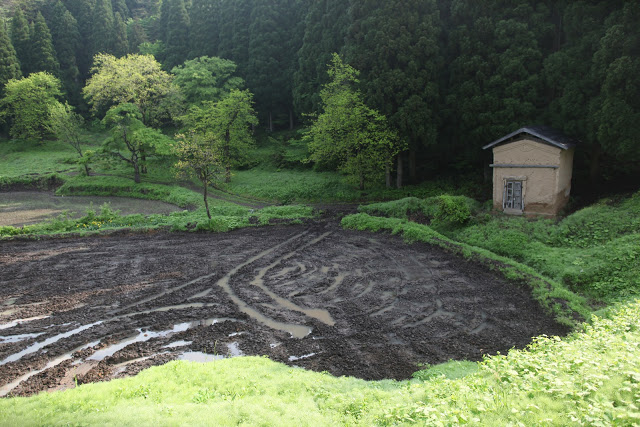The snow melted in March and the Antaiji practioners are back in the fields, plowing, seeding and weeding. There are also lots of trees to be cut, a stone wall to be build where we extend a rice field, and a new water supply to be made. We still accept practioners, but people who come to Antaiji should be prepared to stay for three years (to be able to contribute to the self-suffivient lifeI and speak basic Japanese.
Major samu
Samu (labor) takes places on the days between sesshin:
Raising the rice paddies and reparing the rice fields.
Plowing the vegetable fields and sowing seeds (potatoes, tomatoes, cucumbers, pumpkins, bell peppers, eggplants and lots of greens).
Digging for bamboo shoots and collecting other wild herbs.
Extending the new rice field andf buildign a stone wall.
Cutting trees, chopping wood.
Repairing the roof.
Plumber work to create a new water supply.
Dharma talks
On the night before each long sesshin, the abbot gives a talk on Adult practice.
On the days before one day sesshins, the practioners take terms lecturing on: Shobogenzo Zuimonki
The practioners read the text, explain it and reflect on how it relates to their own practice and their life here.






